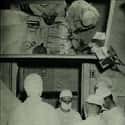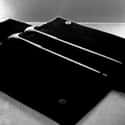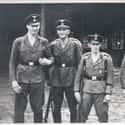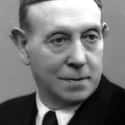-
(#9) Freeman Performed Lobotomies On A Disproportionate Amount Of Women And African Americans
In 2005, author Jack El-Hai was researching a book on Walter Freeman. Called The Lobotomist: A Maverick Medical Genius and His Tragic Quest to Rid the World of Mental Illness, it was contained plenty of information about Freeman and his practices. While researching, El-Hai uncovered some disturbing statistics about the patients who Freeman chose to undergo lobotomies: they were disproportionately female and African American.
Part of this was because doctors at the time believed that women were more likely to be able to function at home as caregivers after undergoing a lobotomy and they wouldn't need as much rehabilitation afterwards as someone who went out of the house to work. Another factor, according to Freeman's records, was that African Americans had greater family ties that would help them recover properly from the procedure.
-
(#3) Psychologist Walter Freeman Renamed And Simplified The Procedure, Turning It Into The Ice Pick Lobotomy
American psychologist Walter Freeman took Moniz's ideas to a different level. Freeman simplified the procedure and renamed it the lobotomy. Instead of drilling holes into a patient's brain, he simply inserted an implement that resembled an ice pick into their eye sockets. This made recovery time faster, since there were no incisions. Also, rather than using Moniz's two-pronged approach of a leucotomy tool and alcohol, Freeman simply severed the connections between the front lobe and the rest of the brain.
This became known as a transorbital lobotomy, the procedure that most people associate with the word, "lobotomy."
-
(#6) Joe Kennedy Had A Lobotomy Performed On His Daughter Rosemary, Because She Was A Potential Embarrassment To The Family
Rosemary Kennedy was the third child born to Joseph Sr. and Rose Kennedy. She was the younger sister of former President John F. Kennedy, and, due to a possible brain injury that she received at birth (a nurse reportedly held her in the birth canal for two hours while waiting for a doctor to arrive), Rosemary was the mentally slowest person in the entire family. This seemed fine when she was a child, but once she became an adult, her outbursts led her father to seek treatments.
Rosemary's sister, Kathleen, looked into the newest treatment at the time - the lobotomy. She rejected it as an option, but Joseph Sr. secretly took Rosemary to have it performed. It had drastic consequences, leaving her unable to walk properly or speak properly. As a result, she spent the rest of her life hidden away in a residential care facility and her plight inspired one of her sisters, Eunice, to create the Special Olympics.
-
(#8) Psychologist Walter Freeman Once Performed 20 Lobotomies In One Day
Once Freeman had simplified his ice pick lobotomy procedure, he could perform many of them in one day. In his view, he was "helping" as many patients as possible. His record was 20 lobotomies in one day. Freeman was reportedly a bit of a showman and he enjoyed having an audience, even when the procedure went wrong and killed his patients.
Over the course of his career, Freeman performed 2,900 lobotomies, with his last one taking place in 1967 and ending with the death of the patient after Freeman accidentally severed a blood vessel in the person's brain.
-
(#7) Mentally Ill WWII Veterans Were Given Lobotomies To Treat What Is Now Known As PTSD
According to records found in the National Archives, nearly 2,000 World War II veterans received lobotomies. The lobotomies were performed on vets who had been diagnosed with depression, schizophrenia, and psychosis - all of which have symptoms overlapping with what is now known as PTSD. In some cases, war veterans received the lobotomies against their will, and for the most part, they were left with serious problems, such as seizures, the loss of motor skills, and even amnesia.
While it was a success for some of the men, the fact that the US Department of Veteran's Affairs didn't save any of the records in their current files and downplays the lobotomies, shows that weren't proud of having forced the procedure on the men whose wellbeing they were in charge of.
-
(#2) Moniz, An Argentinean Neurologist, Was Awarded A Nobel Prize For Inventing The Procedure, Which Was Then Known As A "Leucotomy"
In the 1920s and '30s, a neurologist in Argentina named Antonio Egas Moniz fine-tuned a procedure that he called a leucotomy. It involved drilling holes in the front sections of the skull, then inserting a metal implement with a wire attached to demolish segments of the tissue in the frontal lobe of the brain. After this was completed, he poured a small amount of absolute alcohol into that part of the brain to kill any remaining live tissue.
His procedure was reportedly so successful (or so people believed at the time) that Moniz was awarded a Nobel Prize in Medicine in 1949.
New Random Displays Display All By Ranking
About This Tool
Lobotomy is neurosurgery that removes the connecting tissue of the prefrontal cortex of the brain. It was mainly used to treat some mental illnesses from 1930 to 1950. It was also the world's first psychiatric surgery. The recognized inventor of lobectomy won the Nobel Prize in Physiology and Medicine. However, less than a year later, Antonio Moniz was criticized, and the lobectomy began to be resisted worldwide.
Due to the low precision of the operation performed on the brain under crude conditions, and surgical patients had symptoms similar to dementia and mental retardation after the operation. The random tool explains 14 things about the crude surgical procedure of early lobotomy.
Our data comes from Ranker, If you want to participate in the ranking of items displayed on this page, please click here.
















